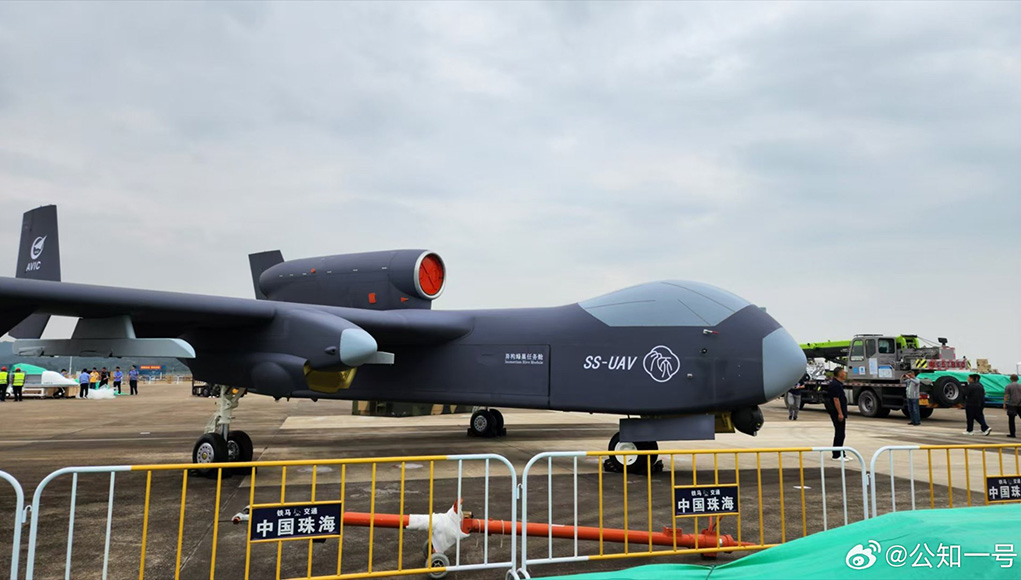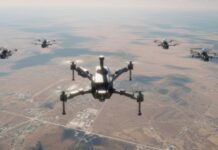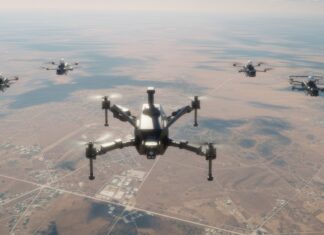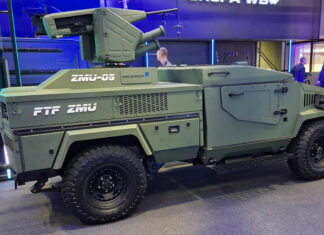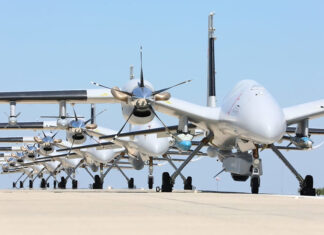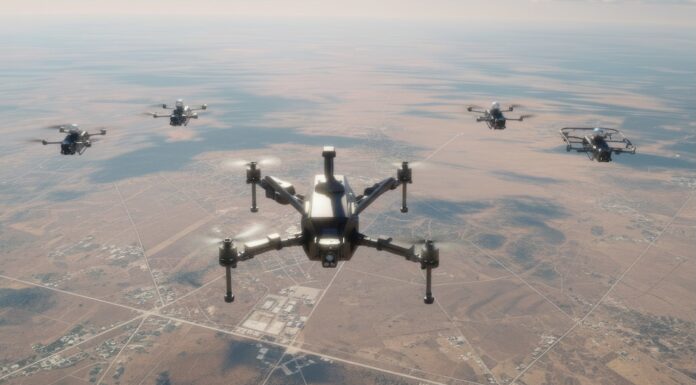China has developed the Jiu Tian (“High Sky”), a high-altitude, long-endurance unmanned aerial vehicle (UAV) conceived as an airborne “mothership” capable of carrying and releasing swarms of smaller drones, loitering munitions and one-way attack (OWA) systems. Designed and developed by the Aviation Industry Corporation of China (AVIC) and built by Xi’an Chida Aircraft Parts Manufacturing under Guangzhou Haige Communications, the Jiu Tian represents a significant extension of the People’s Liberation Army’s (PLA) unmanned combat reach.
With a 25 m wingspan and a maximum takeoff weight of 16 t, the jet-powered Jiu Tian is claimed to be able to operate at altitudes up to 15,000 m (≈50,000 ft) and fly missions as long as 12 hours over ranges of roughly 7,000 km. Its dual sideways-opening bays can deploy up to 100 kamikaze drones or loitering munitions. At the same time, eight external hardpoints allow carriage of air-to-air, air-to-ground, and anti-ship missiles, as well as electronic-warfare payloads—all within a six-tonne maximum internal payload.
Unveiled at the Zhuhai Air Show in November 2024, the Jiu Tian is slated for its maiden flight by the end of June 2025. Following this first sortie, a flight and mission test program will evaluate its systems before formal PLA induction.
Western analysts have raised concerns over the platform’s large radar and infrared signature, speed limitations, and the effective range of drones launched at high altitudes. They also question trade-offs between carrying a full complement of swarm munitions versus range and endurance. The altitude and speed of this platform make it unlikely to deploy swarms of small multirotor drones over contested areas, given its vulnerability to long-range enemy air defenses. However, deployment of smaller swarms of OWA drones (winged loitering weapons) capable of flights of hundreds or thousands of kilometers is a realistic possibility, as drone swarms will be able to gain additional range and unexpected flight paths during their attacks. Employing such a strategy, Jiu Tian offers the PLA an asymmetric strike option capable of saturating or bypassing advanced air-defense networks.
The U.S. Air Force’s Rapid Dragon concept—deploying cruise missiles or drones from transport aircraft—demonstrates a parallel approach to airborne mass delivery, while other concepts explore fighter-launched swarms or MBDA’s Multi-Domain Orchestrated Swarm (MBDA’s ORCHESTRATOR) via sea- and ground-based launchers. Compared to these, Jiu Tian’s dedicated design for large-scale, in-flight swarm release is a novel commitment to airborne swarm doctrine.
As drone warfare rapidly evolves, the Jiu Tian could emerge as a disruptive enabler of massed, networked swarm attacks—overwhelming point defenses through sheer volume and flexibility. Even if early prototypes reveal vulnerabilities in signature management or payload endurance, Jiu Tian’s development path underscores China’s strategic focus on swarm tactics. The West must, therefore, assess this capability on its merits—and accelerate corresponding innovations in counter-swarm defenses should the Jiu Tian enter operational service.


